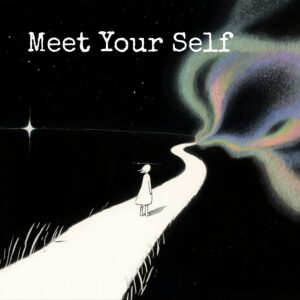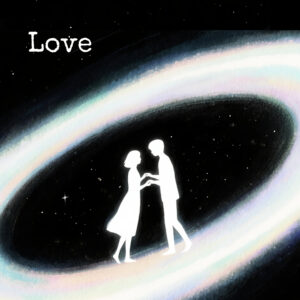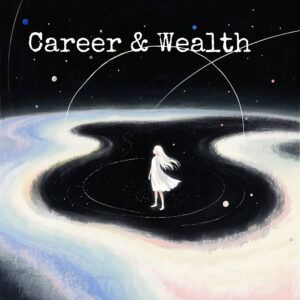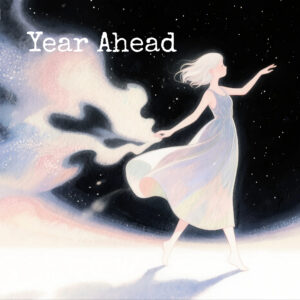占星術は、本質的に象徴の言語です。これらの象徴の中でも、太陽と月という天体ほど強力なものはありません。出生図において、太陽と月の関係は、個人の内なる調和、アイデンティティ、そして心理的構成の礎となります。この記事は、太陽と月の間に起こりうるあらゆるプトレマイオス的アスペクト(合、六分、四分、三分、衝)を包括的に分析し、それらの意味、心理的ニュアンス、そして現実世界での現れ方を解説します。占星術を熱心に学ぶ方にも、興味のある一般の方にも、このガイドは、あなたの出生図における太陽と月のエネルギーの複雑な相互作用を明らかにしてくれるでしょう。
太陽と月の象徴的な重要性
アスペクトについて深く掘り下げる前に、占星術チャートにおいて太陽と月が果たす独特の役割を理解することが重要です。太陽は、核となる自己、意志力、自我、目的、そして意識的なアイデンティティを表します。それは人生の原動力であり、「私は在る」という原理を象徴しています。一方、月は感情、本能、潜在意識の欲求、習慣的な反応、そして記憶を象徴します。それは、私たちがどのように安全を感じ、どのように経験を感情的に処理し、そしてどのように自分自身と他者を育むかに関係しています。
これら二つの天体がアスペクトによって相互作用するとき、意識的な自己(太陽)と潜在意識/感情的な自己(月)がどのように協調するか、あるいは対立するかの方向性を決定します。この二つの力学は、個人の完全性や内なる緊張感を理解する上で基礎となります。
プトレマイオス朝の5つの側面
占星術では、360°の黄道帯の分割に基づいた、プトレマイオス的側面として知られる5つの主要な側面を活用します。
合(0°)
セクスタイル(60°)
正方形(90°)
トライン(120°)
反対(180°)
これらのアスペクトはそれぞれ独自の味わい、融合、あるいは緊張感を持ち、二つの惑星の相互作用に影響を与えます。太陽と月の場合、これらのアスペクトは人の心理的バランス、エネルギー、そしてモチベーションに関する重要な洞察をもたらします。
太陽と月の合:目的と感情の統一
太陽と月の合は、両方の天体が同じ星座にあり、通常は8~10度以内にあるときに起こります。このアスペクトは一般に「合」と呼ばれます。 新月 月の満ち欠けで、始まり、整列、意志と感情の融合を意味します。
核心的な意味と解釈
統合: この合は、自我(太陽)と感情(月)の間に驚くべき調和を生み出します。内面的な葛藤はほとんどなく、思考、行動、感情が調和して機能します。
明瞭度: このような人は率直で、自分が何を望んでいるのかを知り、安心して目標を追求できます。動機や願望が透明です。
潜在的な盲点: 内なる摩擦が少ないことは、自信を深める上で有益である一方で、時に自己陶酔や、別の視点への認識の欠如につながることもあります。感情的な反応と理性的な反応が融合し、状況によっては強みにも限界にもなり得ます。
心理的影響
幼少期と家族の影響: 多くの場合、親の影響が強く、親の人物、特に月の星座に関連する親との同一視が見られます。
内なる自信: これらの個人は、内部のニーズが意識的な意図と矛盾しないため、通常、回復力があり、自立しています。
シャドウサイド
過剰識別: 時々、生まれつき自分の感情や意志にあまりにも従いすぎて、他人や環境への必要な適応を無視してしまうことがあります。
変化の難しさ: 快適ゾーンは深く根付いており、そこから外に出ると方向感覚を失うことがあります。
太陽と月の六分位:自然な流れとチャンス
セクスタイルは、60度離れた惑星同士を結び付け、通常は相性の良いエレメント(火と風、土と水)に該当します。これは調和的なアスペクトと考えられており、トラインほど強烈ではありませんが、その機会によってよりダイナミックな展開が期待されます。
核心的な意味と解釈
統合の機会: 太陽と月はスムーズに連携しますが、その潜在能力を引き出すにはある程度の努力が必要です。それは潜在能力を表しており、それを活用すると成長につながります。
バランスのとれたエネルギー: このアスペクトを持つ人は、ほとんど摩擦なく感情的なニーズや意識的な意図にアクセスできますが、自分のベストを引き出すには積極的に行動する必要があります。
心理的影響
適応性: ネイティブは、感情的なニーズと目標が相互にサポートできる場合、特に新しい経験に対してオープンです。
感情的知性: 自分の感情を本質的に理解しており、それが社会的で親密な関係を築くのに役立ちます。
人生の顕現
協力関係: 多くの場合、自分自身のニーズと他人のニーズを仲介する能力に長けており、自然な協力者になります。
着実な成長: 進歩は、物事が楽にうまくいくことを期待するのではなく、機会をつかむことによって達成されます。
太陽と月のスクエア:内なる緊張と成長
スクエアは、惑星が90度離れ、通常は同じ様相を持ちながらも相容れないエレメントを持つサイン(例えば、太陽が牡羊座、月が蟹座)に位置する場合に形成される、困難なアスペクトです。このアスペクトは、チャートにおける「危機」のポイントとして表現されることが多く、内なる緊張を通して行動を促します。
核心的な意味と解釈
内なる葛藤: 太陽の意識的な方向性は、月の潜在意識的な欲求と相容れません。これは落ち着きのなさや不満を生み出す一方で、これらの緊張を解消しようとする意欲も生み出します。
創造的摩擦: スクエアは成長の原動力であり、個人が問題に立ち向かい、対処戦略を開発することを促します。
心理的影響
区分化: 義務(太陽)と欲望(月)の間で引き裂かれるように感じ、気分の変動や優柔不断さが生じることがあります。
モチベーション: この側面によって生じる不快感は、多くの場合、個人が達成を目指して努力し、外部からの承認や解決策を求めるように駆り立てます。
シャドウサイド
ストレスと疲労: ネイティブが相反する衝動のバランスを取ることを学ばなければ、押し引きの力学によって感情的な疲労が生じる可能性があります。
人間関係の悩み: 欲求とニーズの間の葛藤は個人的な関係において現れ、時には同様の内面的な葛藤を引き起こすパートナーを引き寄せることがあります。
太陽と月のトライン:自然な調和と才能
トラインとは、通常同じエレメントに属する、120度離れた2つの惑星を繋ぐアスペクトです。惑星同士が互いのエネルギーを無理なく強化し合うため、最も調和のとれたアスペクトと考えられています。
核心的な意味と解釈
内なる調和: 太陽と月は互いに支え合い、調和のとれた人格を形成します。感情的なニーズと意識的な目標は自然に一致します。
才能と容易さ: 人生はスムーズに流れ、幸福や達成を阻む内的障壁はほとんどありません。自分自身にとって正しい選択をする本能的な能力が備わっています。
心理的影響
自己受容: このような人は通常、自分自身に満足しており、一貫した行動を示します。
回復力: 彼らの中核的な動機は矛盾しないので、ストレスや変化にも冷静に対処することができます。
人生の顕現
楽な関係: 彼らが自分自身を容易に理解していることは、多くの場合、調和のとれた個人的および職業的な交流につながります。
潜在的な落とし穴: 時には、摩擦が少ないということは、限界を押し広げたり、逆境に対する回復力を養ったりする動機が少なくなることを意味します。
太陽と月の対立:バランスの探求
衝は最も劇的なアスペクトで、太陽と月が180度離れた時に形成されます。通常は互いに補い合いながらも正反対の星座(例えば、太陽が乙女座、月が魚座)にある場合です。これは満月の相であり、最大の啓示と緊張を表します。
核心的な意味と解釈
偏光: 太陽と月は黄道帯で正反対の位置にあり、自己の相反する部分を統合する必要性を浮き彫りにしています。意識と無意識、意志と本能は絶え間なく対話を続けています。
投影: 生まれつきの人は、特に親しい関係においては、自分の内面の葛藤が他人に投影されることによく遭遇します。
心理的影響
代償行動: 人は、意識的な意図によって動かされる場合もあれば、感情的な反応によって動かされる場合もあります。
関係の必要性: この側面は、個人が自分自身には欠けている、または否定されていると感じる資質を他人に求めるため、パートナーシップに対する強い欲求を意味することがよくあります。
人生の顕現
ドラマチックな関係: 内部の緊張は、バランスを求める内部の闘争を反映して、刺激的だが波乱に満ちたパートナーシップとして現れることがあります。
個人的な成長: 太陽と月の相反するエネルギーを統合するという課題は、特にその人が自分自身の両面を尊重することを学ぶ場合には、大きな個人的な進化につながる可能性があります。
比較概観:人生における太陽と月のアスペクト
これらの側面がどのように作用するかをさらに理解するために、いくつかの実際的かつ心理的なシナリオを考えてみましょう。
キャリアの選択: 太陽と月がトラインまたはセクスタイルである人は、野心と感情的ニーズの両方を満たす職業を選択する傾向がありますが、スクエアまたはオポジションである人は、相反する内なる衝動を調整しようと奮闘するため、頻繁にキャリアの変更や危機に直面する可能性があります。
家族と幼少期: 太陽と月の相性の性質は、幼少期に経験した親との関係を反映していることが多く、愛着、独立、安心感のパターンを形成します。
個人的な充実感: 結局のところ、太陽と月の相性の質が、満足感、充足感、目的意識をどれだけ簡単に見つけられるかを決定します。
太陽と月のアスペクトの進化の可能性
占星術は宿命論ではありません。太陽と月のあらゆるアスペクトは、どんなに困難な状況であっても、成長の芽を秘めています。コンジャンクションは明晰さをもたらしますが、外部の視点を求めることでより豊かになります。セクスタイルは潜在的な才能の開花を促します。スクエアは統合を促し、自己発見へと導きます。トラインは安らぎを与えますが、自己満足を避けるよう促します。オポジションは、生涯にわたる内なるバランスの探求を促し、人との関わり方や妥協の術を教えてくれます。
あなたの太陽と月の相性を理解することは、あなた独自の心理的状況を把握し、より充実した人生のためにあなたの内なる資源を活用するための第一歩です。
結論
太陽と月の関係は出生占星術において中心的な役割を果たし、人格と人生の旅路の背骨を形成します。それぞれのアスペクトを詳細に研究することで、個人的なダイナミクス、可能性、そして課題について深い洞察を得ることができます。自己理解のために学ぶ場合でも、他者のためにリーディングする場合でも、それぞれの太陽と月のアスペクトの微妙なニュアンスを理解することで、占星術チャートの複雑さと美しさへの理解が深まります。



